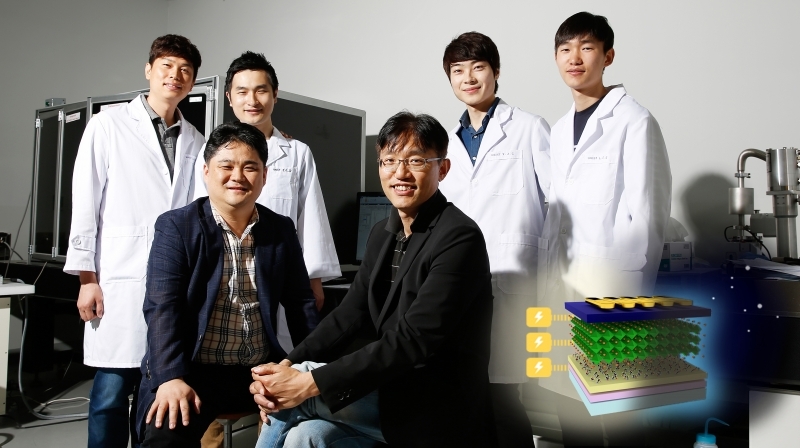On May 5, a team of UNIST and Ulsan University researchers announced they have developed perovskite optoelectronic devices that can generate electricity during the day and emit light at night.
This study is a collaboration among scientists, including Prof. Myoung Hoon Song (School of Materials Science and Engineering), Prof. Kyoung-Jin Choi (School of Mechanical and Advanced Materials Engineering) at UNIST, and Prof. Shinuk Cho from the Department of Physics and EHSRC, University of Ulsan.
In this study, the research team fabricated planar solar cells from perovskite materials through the morphological control of the perovskite films and the application of a surface treatment between the TiO2 and perovskite layers, using an amine-based solvent treatment, thereby achieving highly efficient planar perovskite optoelectronic devices.
Through this research, the team states, “Amine-based solvent treatment between the TiO2 and the perovskite layers enhances electron injection and extraction and reduces the recombination of photogenerated charges at the interface.”
This work has been financially supported by the KIST-UNIST partnership program or equivalently by the 2014 Research Fund of UNIST. The portion of this research conducted at the University of Ulsan was supported by the National Research Foundation of Korea Grant (NRF).
The paper appeared online in the May 5, 2015 issue of Advanced Materials, a weekly peer-reviewed scientific journal covering a broad spectrum of material science research. Details of the research will be published next month, as the cover picture.
Journal Reference:
Jae Choul Yu, Da Bin Kim, Gyoelim Baek, Bo Ram Lee, Eui Dar Jung, Seungjin Lee, Jae Hwan Chu, Doh-Kwon Lee, Kyoung Jin Choi, Shinuk Cho, Myoung Hoon Song, “High-Performance Planar Perovskite Optoelectronic Devices: A Morphological and Interfacial Control by Polar Solvent Treatment.” Advanced Materials (67), 215-225.














